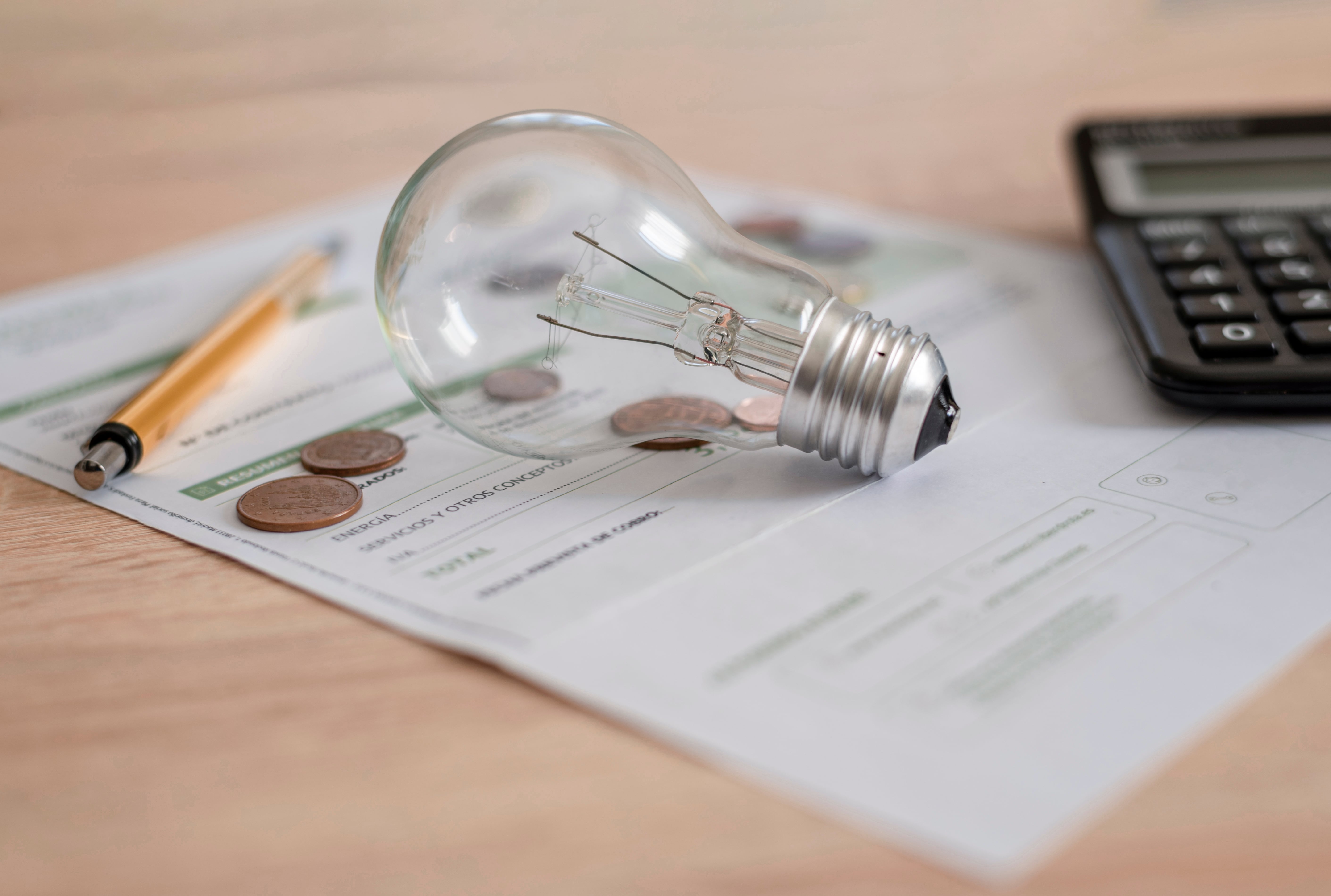When summer sunsets stretch late into the evening and winter nights briskly remind you of the north, managing your electricity plan isn't just a routine task—it's a strategic decision that can impact the average electric bill in Texas significantly. But when is the best time to shop for electricity in Texas?
Understanding when to shop for electricity plans in Texas isn't just about snagging a good deal; it's about optimizing your expenses over the long term. At Gexa Energy, we're here to guide you through this process, ensuring you make an informed choice that aligns with both your electricity needs and financial goals.
{{CTA-Plans}}
Factors Impacting Electricity Prices in Texas
Electricity pricing in Texas can often feel as unpredictable as a spring thunderstorm. However, several consistent factors play a crucial role in shaping these fluctuations:
Demand and Supply Dynamics: In Texas, as in any market, the principles of demand and supply are fundamental determinants of electricity prices. During the sweltering summers, demand for electricity soars as residents and businesses crank up their air conditioning units to combat the heat. Similarly, winter months see a spike in demand as heating systems operate continuously to ward off the cold. These periods of high demand can lead to increased electricity prices. Conversely, during the milder spring and autumn months, the demand for electricity decreases, often leading to more favorable electricity rates.
Detailed Seasonality Analysis: The impact of seasonality on electricity rates is profound. In addition to the broad summer and winter demands, specific seasonal weather events can also affect pricing. For instance, sudden heatwaves or unseasonably cold periods can temporarily drive up demand and prices. Furthermore, Texas’ susceptibility to hurricanes and storms can disrupt electricity production and supply infrastructure, leading to short-term price spikes due to sudden supply shortages.
Extended Impact of Market Trends: Beyond immediate weather-related impacts, several longer-term market trends significantly influence electricity rates:
- Economic Factors: The general state of the economy can affect electricity prices. Economic downturns typically lead to decreased industrial activity and, therefore, lower electricity demand, pushing prices down. Conversely, economic booms might increase residential and commercial demand, driving prices up.
- Regulatory Changes: Changes in state or federal energy regulations can have direct implications for electricity pricing. For instance, regulations to reduce emissions might increase production costs for providers who may pass these costs onto consumers.
- Advancements in Sustainable Energy: Texas is a national leader in wind energy production and has rapidly expanding solar energy capacities. The integration of these renewable energy sources is increasingly influencing the state’s electricity pricing. As more sustainable energy sources come online, the potential for more stable, possibly lower, electricity rates increases because these sources often have lower operational costs once established.
Technological Innovations: The adoption of advanced technologies, such as smart grids and energy storage solutions, can also impact electricity pricing. Smart grids help improve the efficiency of electricity distribution and can reduce costs over time. Energy storage technologies allow for excess electricity produced during low demand periods (especially from renewable sources) to be stored and used during peak demand, potentially stabilizing prices.
Best Times of the Year to Shop for Electricity
Historical data and trends are indispensable when determining the best time to shop for electricity in Texas:
Strategic Considerations for Timing Your Search:
- Monitor Weather Forecasts and Trends: Weather plays a crucial role in electricity demand and pricing. By monitoring extended weather forecasts, consumers can anticipate periods of mild weather that are likely to coincide with lower electricity rates.
- Keep an Eye on Market Developments: External factors such as changes in fuel prices, advancements in renewable energy, or shifts in regulatory policies can also influence the best times to shop for electricity. For example, a sudden increase in natural gas prices might affect electricity rates since many power plants in Texas use natural gas.
- Consider Your Contract’s Renewal Date: Aligning your shopping period with your contract’s renewal date can prevent lapses in service or default renewals into potentially higher-priced plans. Planning ahead can give you the flexibility to choose the best available rates and terms.
Utilizing Historical Pricing Data: Many online tools and resources are available that provide historical electricity pricing data. These tools can help consumers identify pricing trends and forecast future rate changes. By analyzing this data, Texas residents can make more informed decisions about the most economical times to switch plans or negotiate new contracts.
Tips for Locking in the Best Rates
Securing the best possible electricity rate isn't just about finding the lowest number—it's about understanding market dynamics, utilizing the right tools, and aligning your electricity plan with your lifestyle and usage patterns:
Monitor Market Rates: Vigilantly keeping an eye on Texas electricity rates throughout the year is crucial. This continuous monitoring allows you to spot potential drops in prices or special promotional offers that emerge. Setting up alerts with various energy websites or apps can help automate this process, ensuring you receive real-time updates when prices dip or when new, more competitive plans become available.
Consider Long-Term Contracts: Locking in a rate with a long-term contract can be a smart move if you anticipate stable or rising electricity prices in the future. However, it requires careful consideration:
- Assess Your Long-Term Electricity Needs: Think about potential changes in your living situation, such as moving to a new home or changes in household size, which could affect your future energy needs.
- Evaluate Financial Stability: Ensure that the stability of locking in a rate outweighs the potential benefits of flexibility, especially if your electricity usage might decrease in the future.
- Understand Contract Terms: Be fully aware of the terms associated with a long-term contract, including any penalties for early termination or fees associated with changing your plan.
Stay Informed About Renewables: With the growth of renewable energy in Texas, consider plans that incorporate wind, solar, or other renewable sources. These plans can not only help lock in lower rates as renewable production costs continue to drop but also allow you to contribute to a more sustainable energy future.
Common Mistakes to Avoid When Choosing an Electricity Plan
Selecting the right electricity plan is crucial, but common pitfalls can trip up even the savviest shoppers. Being aware of these can help you make more informed decisions when learning how to choose an electricity plan:
Overlooking Contract Details: One of the most frequent errors in choosing an electricity plan is not paying close attention to the contract's fine print. This oversight can lead to unexpected costs and complications down the line. It's essential to understand:
- Fees: Look for and understand any fees that may apply, such as setup fees, monthly service fees, or fees related to minimum usage requirements.
- Penalty Clauses: Be aware of any penalties for early contract termination or for exceeding or not meeting certain usage levels.
- Rate Calculation: Understand how your rate is calculated. Some plans offer a fixed rate, while others may vary based on time of use or the level of consumption. Ensure that the rate structure aligns with your usage pattern and that you are aware of any conditions that could change your rate.
Chasing Only Low Prices: While it’s tempting to choose plans with the lowest advertised rates, this can sometimes lead to bigger issues in the long term:
- Service Quality: Low rates might come at the cost of poor customer service or unreliable supply, which can be frustrating and problematic, especially during outages or billing disputes.
- Reliability: Research the provider's reputation for reliability. Look at customer feedback and ratings to gauge other consumers' experiences.
- Renewable Energy Options: If sustainability is important to you, consider whether the plan uses renewable energy sources. Sometimes, plans that include renewables might have slightly higher rates but offer environmental benefits and could provide more price stability as renewable energy costs continue to decline.
Ignoring Usage Patterns: Not considering how and when you use electricity can result in choosing a plan that doesn’t match your needs:
- Peak vs. Off-Peak Rates: Some plans offer different rates at different times of the day or week. If you can shift significant electricity use to off-peak times, such as running your dishwasher or laundry overnight, you could benefit from lower rates.
- Seasonal Usage: Your electricity use may vary by season, especially in Texas, where summers can be extremely hot. Plans that offer good rates year-round might be more beneficial than plans that only offer low rates seasonally.
Not Re-Evaluating Plans Regularly: Electricity needs and market offers change, and what was a great plan two years ago might not be the best fit now. Regularly re-evaluating your plan can ensure you always have the most cost-effective and suitable plan based on current market conditions and your changing electricity needs.
By avoiding these common mistakes and carefully considering each aspect of potential electricity plans, you can choose a plan that not only saves you money but also fits your lifestyle and supports your values, such as environmental sustainability. Always take a holistic view of each plan and engage in thorough research to make the most informed decision.
Smart Shopping for Electricity in Texas
Finding the best time to shop for electricity in Texas can profoundly impact your electricity bills and overall satisfaction with your electricity service. By understanding the seasonal dynamics, market trends, and your own usage patterns, you can choose the right electricity plan for your home.
At Gexa Energy, we are committed to helping you navigate the complexities of the Texas electricity market with ease and confidence. Explore our range of plans today and take control of your electricity consumption with a provider that understands your needs and values your peace of mind. Make the smart choice—shop wisely and enjoy the benefits of a tailored, efficient, and responsive electricity service.






































